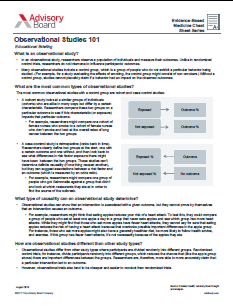When it comes to racial bias in medicine, "[w]e hope we are better today," Aaron Carroll, a professor of pediatrics, writes in the New York Times' "The Upshot." But a close look at the most recent evidence is "not as encouraging as you might think," according to Carroll.
What recent research reveals about racial bias in medicine
Racial bias in medicine is an ongoing problem, Carroll writes.
He notes that a 2017 systematic review of nine studies that measured physicians' implicit bias using the Implicit Association Test found "an implicit preference for white patients, especially among white physicians." According to Carroll, two of the studies showed a relationship between bias and clinical decision-making, and one study found that white patients were more likely to receive treatment for myocardial infarction than black patients.
While Carroll acknowledges that the Implicit Association Test "has its flaws," a larger systematic review of 42 implicit bias studies—of which only 15 used the Implicit Association test—came to a similar conclusion: "[Physicians'] biases are consistent with those of the general population," Carroll writes, but unlike biases among non-caregivers, physicians' "biases are likely to affect diagnosis and care."
For example, in a 2014 study, researchers presented 543 physicians with identical descriptions of patients with severe osteoarthritis. The results were discouraging: "Even though the descriptions of the cases were identical except for the race of the patients (African-Americans and whites), participants reported that they believed the white patients were being more medically cooperative than the African-American ones," Carroll writes.
Minorities—especially black patients—are 'treated differently'
The evidence for racial discrimination is not new in health care, Carroll writes. The Institute of Medicine in 2003 published a landmark report that found physicians treated black patients differently than white patients in cardiovascular procedures and "whether they received optimal care with respect to a cancer diagnosis" or HIV diagnosis, Carroll writes. The report also found disparities among patients with "diabetes, kidney disease, mental health problems, and for those who were pregnant or were children," Carroll writes.
And those disparities can have fatal consequences. According to Carroll, the report found black patients "were also more likely to die from these illnesses even after adjusting for age, sex, insurance, education and the severity of the disease."
Only 'limited success' in changing the medical field
While the Institute of Medicine outlined action steps to reduce the disparities—including endorsing evidence-based care, training more minorities as health care professionals, encouraging the hiring of interpreters, and implementing cross-cultural education for clinicians—the effort was "met with limited success," Carroll writes.
And while research shows that the United States has made some improvement to reduce health care disparities, "many [disparities] remained," Carroll writes. He cites a 2017 Agency for Healthcare Research and Quality report that found 40% of 21 examined quality measures were still worse for blacks than whites. The measures were also worse for 20% of Asian-Americans, 30% of Native Americans, and about 33% of Hispanics and Pacific Islanders.
So while "[i]t would be easy to … conclude … that things have changed. Many things have not," Carroll writes. He adds that the research shows that racial bias, both explicit and implicit, is "still pervasive today" and "[a]ny fair assessment of the evidence suggests much work remains to be done" (Carroll, "The Upshot," New York Times, 2/25).
How to address health inequity in your community
With the shift in health care to focus on optimizing the health of individuals and communities, health care organizations are creating new strategies to address health care disparities in access and patient outcomes.
Advisory Board has created the Health Disparities Initiative, which provides actionable resources on a series of strategic imperatives and special topics to achieve equity of care. Interested in seeing research or resources that address your biggest health equity problems?
Download our resource, "Building Community Partnerships to Reduce Disparities," which includes studies featuring providers who have successfully partnered with community organizations to address health disparities and social determinants of health. You'll also find tools that can guide your organization’s community partnership strategy.
Don't miss out on the latest Advisory Board insights
Create your free account to access 1 resource, including the latest research and webinars.
Want access without creating an account?
You have 1 free members-only resource remaining this month.
1 free members-only resources remaining
1 free members-only resources remaining
You've reached your limit of free insights
Become a member to access all of Advisory Board's resources, events, and experts
Never miss out on the latest innovative health care content tailored to you.
Benefits include:
You've reached your limit of free insights


